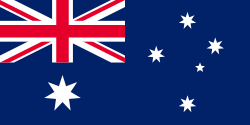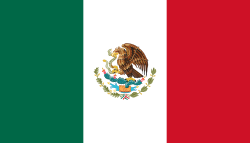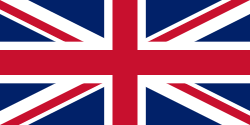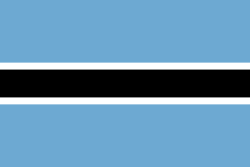Salvá Ajd Násirová
| Salvá Ajd Násirová | |
|---|---|
 | |
| Osobní informace | |
| Rodné jméno | Ebelechukwu Agbapuonwu |
| Narození | 23. května 1998 (26 let) Onitsha, Nigérie |
| Stát | |
| Výška | 168 cm |
| Kariéra | |
| Disciplína | 400 m |
| Některá data mohou pocházet z datové položky. | |
| Přehled medailí | ||
|---|---|---|
| stříbro | Paříž 2024 | 400 m |
| Mistrovství světa v atletice | ||
| zlato | Dauhá 2019 | 400 m |
| stříbro | Londýn 2017 | 400 m |
| bronz | Dauhá 2019 | 4 x 400 m mix |
Salvá Ajd Násirová, rozená Ebelechukwu Agbapuonwuová (arabsky سلوى عيد ناصر;(anglicky Salwa Eid Naser; * 23. května 1998 Onitsha) je původem nigerijská atletka–čtvrtkařka, která od roku 2014 reprezentuje Bahrajn. Je mistryní světa z roku 2019 a stříbrnou olympijskou medailistkou z roku 2024 na trati 400 metrů.
Kariéra
S atletikou začala v 11 letech v rodném Onitsha v Nigérii ve státě Anambra.[1] V roce 2013 si jí na školním mistrovství v Port Harcourtu všiml manažer bahrajnské reprezentace, Nigerijec John George Obeya, a dal jí příležitost startovat za Bahrajn. Bahrajnské občanství získala v roce 2014 v 16 letech.[2] V začátcích své sportovní kariéry v Bahrajnu se připravovala pod vedením bulharského trenéra Janka Bratanova, pod jehož vedením se začala specializovat na trať 400 metrů.[3] Později ji vedl Dominikánec José Ludwig Rubio.[4] V roce 2017 ve finále mistrovství světa v Londýně na trati 400 metrů doběhla druhá v čase 50,06 s. V roce 2019 ve finále mistrovství světa v Dauhá na trati 400 m doběhla první v čase 48,14 s., který je třetím nejrychlejším časem všech dob a asijským kontinentálním rekordem.[5]
Reference
- ↑ Archivovaná kopie. www.makingofchamps.com [online]. [cit. 2019-10-05]. Dostupné v archivu pořízeném z originálu dne 2019-10-05.
- ↑ Detaily zisku občanství nebyly zveřejněny. Jelikož tvrdí, že její otec je Bahrajňan, tak s velkou pravděpodobností podstoupila adopci, což nutně obnáší i konverzi k islámu.
- ↑ Archivovaná kopie. www.gulfweekly.com [online]. [cit. 2019-10-05]. Dostupné v archivu pořízeném z originálu dne 2019-10-05.
- ↑ Archivovaná kopie. www.afp.com [online]. [cit. 2019-10-05]. Dostupné v archivu pořízeném z originálu dne 2019-10-05.
- ↑ https://www.iaaf.org/competitions/iaaf-world-championships/iaaf-world-athletics-championships-doha-2019-6033/results/women/400-metres/final/result
Osobní rekordy
- 100 metrů - 11,24 s. (Salamanca, 2019)
- 200 metrů - 22,51 s. (Palo Alto, 2019) NR
- 300 metrů - 37,92 s. (Riffa, 2018)
- 400 metrů - 48,14 s. (Dauhá, 2019) AR, NR
Externí odkazy
 Obrázky, zvuky či videa k tématu Salvá Ajd Násirová na Wikimedia Commons
Obrázky, zvuky či videa k tématu Salvá Ajd Násirová na Wikimedia Commons - Salvá Ajd Násirová na stránkách Světové atletiky (anglicky)
Média použitá na této stránce
Olympic Rings without "rims" (gaps between the rings), As used, eg. in the logos of the 2008 and 2016 Olympics. The colour scheme applied here was specified in 2023 guidelines.
Olympic Rings without "rims" (gaps between the rings), As used, eg. in the logos of the 2008 and 2016 Olympics. The colour scheme applied here was specified in 2023 guidelines.
Vlajka České republiky. Podoba státní vlajky České republiky je definována zákonem České národní rady č. 3/1993 Sb., o státních symbolech České republiky, přijatým 17. prosince 1992 a který nabyl účinnosti 1. ledna 1993, kdy rozdělením České a Slovenské Federativní republiky vznikla samostatná Česká republika. Vlajka je popsána v § 4 takto: „Státní vlajka České republiky se skládá z horního pruhu bílého a dolního pruhu červeného, mezi něž je vsunut žerďový modrý klín do poloviny délky vlajky. Poměr šířky k její délce je 2 : 3.“
Flag of Australia, when congruence with this colour chart is required (i.e. when a "less bright" version is needed).
See Flag of Australia.svg for main file information.Flag of Senegal
The flag of the Dominican Republic has a centered white cross that extends to the edges. This emblem is similar to the flag design and shows a bible, a cross of gold and 6 Dominican flags. There are branches of olive and palm around the shield and above on the ribbon is the motto "Dios,Patria!, Libertad" ("God, Country, Freedom") and to amiable freedom. The blue is said to stand for liberty, red for the fire and blood of the independence struggle and the white cross symbolized that God has not forgotten his people. "Republica Dominicana". The Dominican flag was designed by Juan Pablo Duarte, father of the national Independence of Dominican Republic. The first dominican flag was sewn by a young lady named Concepción Bona, who lived across the street of El Baluarte, monument where the patriots gathered to fight for the independence, the night of February 27th, 1844. Concepción Bona was helped by her first cousin María de Jesús Pina.
The flag of the Dominican Republic has a centered white cross that extends to the edges. This emblem is similar to the flag design and shows a bible, a cross of gold and 6 Dominican flags. There are branches of olive and palm around the shield and above on the ribbon is the motto "Dios,Patria!, Libertad" ("God, Country, Freedom") and to amiable freedom. The blue is said to stand for liberty, red for the fire and blood of the independence struggle and the white cross symbolized that God has not forgotten his people. "Republica Dominicana". The Dominican flag was designed by Juan Pablo Duarte, father of the national Independence of Dominican Republic. The first dominican flag was sewn by a young lady named Concepción Bona, who lived across the street of El Baluarte, monument where the patriots gathered to fight for the independence, the night of February 27th, 1844. Concepción Bona was helped by her first cousin María de Jesús Pina.
Autor: Erik van Leeuwen, attribution: Erik van Leeuwen (bron: Wikipedia)., Licence: CC BY-SA 4.0
Salwa Eid Naser in the women's 400m final at the 2019 World Championships in Doha














